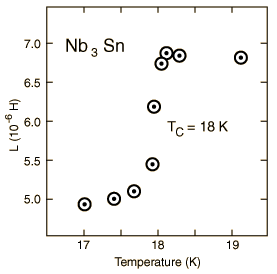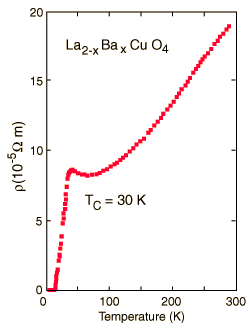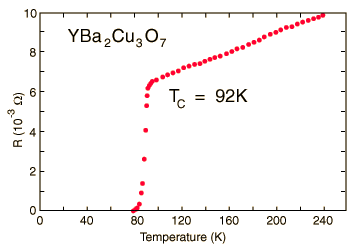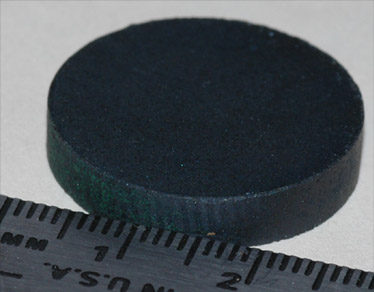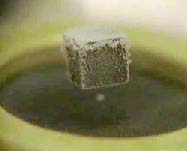Mercury Superconducting Transition
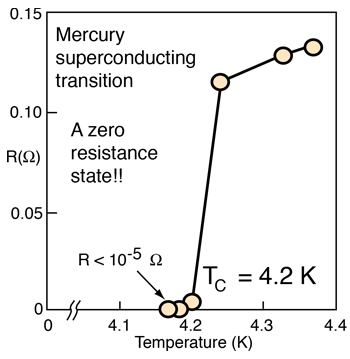 |
Mercury was historically the first to show superconductivity, and it is an example of a Type I superconductor. Its practical usefulness is limited by the fact that its critical magnetic field is only 0.019 T, so the amount of electric current it can carry is also limited.

|
Superconductivity concepts
Reference Rohlf,Ch 15
| HyperPhysics***** Condensed Matter | R Nave |
